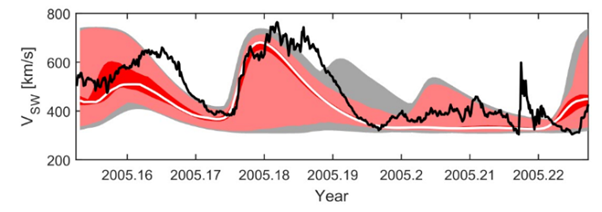Long lead-time space-weather forecasts require accurate prediction of the solar wind conditions in near-Earth space. The current state-of-the-art involves coupled numerical models initialised using photospheric magnetic field observations. This deterministic approach means there is no estimate of forecast uncertainty. Large ensembles with perturbed boundary conditions aren’t really feasible due to computational expense. We have developed a method for producing a large ensemble of near-Earth solar wind conditions using the numerical model output with a simple 1-dimensional solar wind model (http://onlinelibrary.wiley.com/doi/10.1002/2017SW001679/full). This approach produces a probabilistic solar wind forecast which accurately captures the forecast uncertainty.
